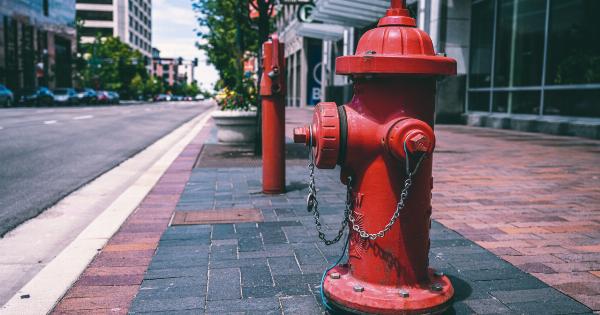Home is supposed to be a place of safety and comfort, where we can relax and unwind from the outside world. However, there are hidden dangers lurking in our homes that we may not even be aware of.
These unseen threats can impact our health and well-being, and it’s crucial to educate ourselves about them to minimize the risks. In this article, we will explore some of the most common unseen threats found in every home and how to protect ourselves and our loved ones.
Poor Indoor Air Quality
One of the most significant unseen threats in homes is poor indoor air quality. We often assume that the air inside our homes is cleaner than the air outside, but this is not always the case.
Indoor air pollution can arise from various sources, such as dust, pet dander, mold, and volatile organic compounds (VOCs) emitted by household products and furnishings.
Mold and Mildew
Mold and mildew thrive in damp and poorly ventilated areas of our homes, such as bathrooms, kitchens, and basements. These fungi release spores into the air, which can cause respiratory issues, allergies, and even chronic illnesses.
Regular cleaning and maintenance, along with adequate ventilation, are crucial in preventing mold and mildew growth and reducing the associated health risks.
Carbon Monoxide Poisoning
Carbon monoxide (CO) is an odorless and colorless gas that can be deadly if inhaled in high concentrations. It is produced by fuel-burning appliances, such as gas stoves, furnaces, and water heaters.
Without proper ventilation or functioning detectors, carbon monoxide can silently accumulate in our homes, leading to CO poisoning. Installing carbon monoxide detectors and ensuring regular maintenance of these appliances are essential precautions to avoid this silent threat.
Electromagnetic Fields (EMFs)
In today’s technology-driven world, the use of electronic devices is widespread. However, these devices emit electromagnetic fields (EMFs) that can potentially harm our health.
Extended exposure to EMFs has been linked to various health issues, including headaches, sleep disturbances, and even cancer. Minimizing exposure by keeping a safe distance from electronic devices when not in use and limiting screen time can help mitigate this invisible threat.
Lead and Asbestos
Older homes may still have traces of lead-based paint and asbestos-containing materials.
While these substances are harmless when undisturbed, deteriorating lead-based paint or damaged asbestos can release toxic particles into the air, posing severe health risks. If you live in an older home, it is essential to hire professionals to test for and safely remove any lead or asbestos materials.
Hidden Allergens
Allergens can hide in plain sight in our homes, triggering allergies and respiratory problems. Common hidden allergens include dust mites, pollen, pet dander, and cockroach droppings.
Regular cleaning, vacuuming with HEPA filters, using allergen-proof bedding covers, and keeping pets out of bedrooms can help minimize exposure to these allergens.
Chemicals in Cleaning Products
We use various cleaning products in our homes to maintain cleanliness, but many of these products contain harmful chemicals.
Harsh cleaning agents and aerosol sprays can release volatile organic compounds (VOCs) into the air, contributing to indoor air pollution and potential health problems. Opting for natural and eco-friendly cleaning products or making homemade cleaners using simple ingredients like vinegar and baking soda can significantly reduce our exposure to toxic chemicals.
Radon Gas
Radon gas is a naturally occurring, radioactive gas that can seep into homes through cracks in the foundation or other openings. Prolonged exposure to radon can increase the risk of lung cancer, making it a silent but deadly threat.
Testing for radon levels in our homes is crucial, and if high levels are detected, installing a radon mitigation system is necessary to reduce the risk.
Fire Hazards
Fire hazards are another unseen threat that can have catastrophic consequences. Electrical faults, overloaded power outlets, unattended candles, and unsafe cooking practices can all lead to devastating fires.
Being vigilant, regularly checking electrical systems, using fire-resistant materials, and practicing basic fire safety measures can minimize the risk of fires in our homes.
Water Contamination
Contaminated water can pose significant health risks, but many of us assume that our tap water is safe to consume. However, various unseen contaminants such as lead, bacteria, pesticides, and chemicals can infiltrate our water supply.
It is crucial to install water filters or regularly test water quality to ensure its safety for drinking and other domestic uses.
Conclusion
While our homes offer comfort and security, they can also harbor unseen threats that may jeopardize our health and well-being.
By being aware of these hidden dangers and taking appropriate measures, we can create a safer and healthier living environment for ourselves and our loved ones. Regular maintenance, proper ventilation, utilizing natural-based products, and using safety devices such as detectors and filters can go a long way in protecting us from the unseen threats lurking in our homes.






























